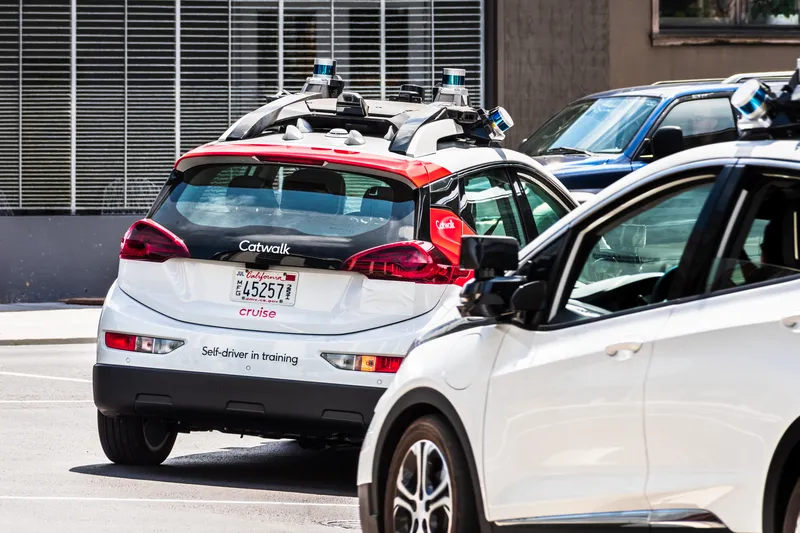The latest research report from MarketsandMarkets indicates that the connected car devices market is projected to grow at a CAGR of 16.3 per cent from 2016 to 2021, to reach US$57.15 Billion by 2021. Some of the major factors responsible for the growth of the market are government regulations for safety and increasing electrification of vehicles.
Connected car devices with dedicated short range communication (DSRC) as connectivity use short range communication technologies such as radar and Lidar, which
April 6, 2017
Read time: 2 mins
The latest research report from 6418 MarketsandMarkets indicates that the connected car devices market is projected to grow at a CAGR of 16.3 per cent from 2016 to 2021, to reach US$57.15 Billion by 2021. Some of the major factors responsible for the growth of the market are government regulations for safety and increasing electrification of vehicles.
Connected car devices with dedicated short range communication (DSRC) as connectivity use short range communication technologies such as radar and Lidar, which are designed for a communication range up to 1000 feet. DSRC allows rapid communication between connected car networks and is used for various applications in the modern automobiles.
The high demand for DSRC can be attributed to several advantages offered by the technology in connected vehicle applications. DSRC is used in various vehicle-to-vehicle (V2V) and vehicle-to-infrastructure (V2I) applications such as adaptive cruise control, park assist systems and collision avoidance systems. The market for these technologies is growing rapidly and regulatory bodies in Europe and North America are planning to mandate some of these technologies.
The global connected car devices market is estimated to be dominated by the telematics devices during the review period. Telematics systems have been mandated in all passenger cars in most of the advanced economies of Europe and North America. In addition, Asian countries such as China and India are also investigating the benefits of telematics technology. The regulation regarding telematics mandate is estimated to be followed from 2019 onwards. These factors make the telematics devices one of the most prominent technologies in the connected car devices market.
Asia-Pacific was estimated to be the largest market for connected car devices in 2016, owing to increasing vehicle production in countries such as Japan, China, and India and stringent safety regulations in these countries. Changing government approach towards vehicle, driver, passenger and pedestrian safety has imposed many regulations, which mandate automobile manufacturers to deliver vehicles with installed safety features. Additionally, improving socio-economic conditions in countries such as India, Thailand, and Indonesia have resulted in the growth of demand for premium segment passenger cars, which in turn has accelerated the market for connected car devices in these countries.
Connected car devices with dedicated short range communication (DSRC) as connectivity use short range communication technologies such as radar and Lidar, which are designed for a communication range up to 1000 feet. DSRC allows rapid communication between connected car networks and is used for various applications in the modern automobiles.
The high demand for DSRC can be attributed to several advantages offered by the technology in connected vehicle applications. DSRC is used in various vehicle-to-vehicle (V2V) and vehicle-to-infrastructure (V2I) applications such as adaptive cruise control, park assist systems and collision avoidance systems. The market for these technologies is growing rapidly and regulatory bodies in Europe and North America are planning to mandate some of these technologies.
The global connected car devices market is estimated to be dominated by the telematics devices during the review period. Telematics systems have been mandated in all passenger cars in most of the advanced economies of Europe and North America. In addition, Asian countries such as China and India are also investigating the benefits of telematics technology. The regulation regarding telematics mandate is estimated to be followed from 2019 onwards. These factors make the telematics devices one of the most prominent technologies in the connected car devices market.
Asia-Pacific was estimated to be the largest market for connected car devices in 2016, owing to increasing vehicle production in countries such as Japan, China, and India and stringent safety regulations in these countries. Changing government approach towards vehicle, driver, passenger and pedestrian safety has imposed many regulations, which mandate automobile manufacturers to deliver vehicles with installed safety features. Additionally, improving socio-economic conditions in countries such as India, Thailand, and Indonesia have resulted in the growth of demand for premium segment passenger cars, which in turn has accelerated the market for connected car devices in these countries.








